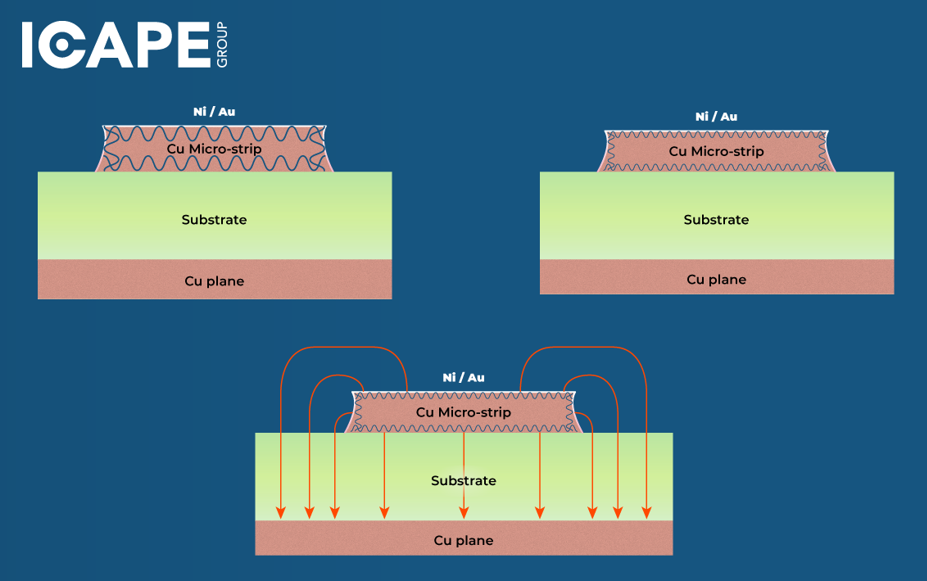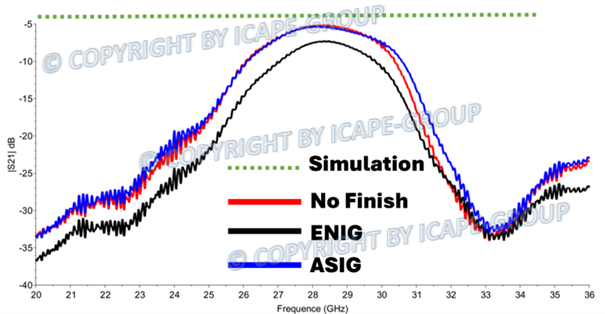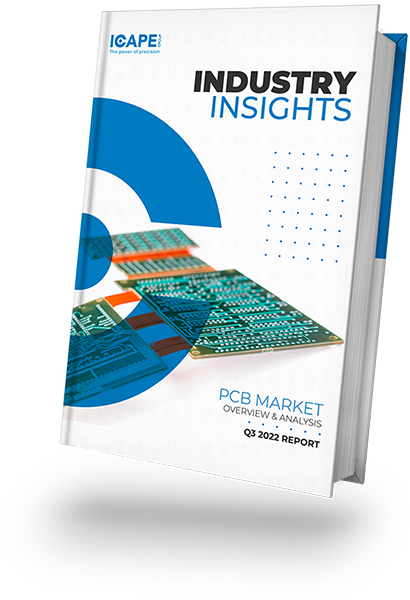ASIG Surface Finish
Advantages and Benefits compared to ENIG
Radar and interactive communication systems surround us, and the PCB Surface treatment has begun to play an even more significant role in the functionality of the future electronic systems.
The modern electronics require a flat solderable surface to support fine pitch and BGA components. Several surface treatments meet these requirements, but the pre-dominant most common surface is ENIG due to the gold´s unique long term surface protection. The Nickel barrier between the copper and the gold is a problem that needs attention since Nickel is a ferromagnetic metal, which on higher frequencies increases the signal insertion loss.

At low frequencies the signal is running in the complete copper conductor, but at higher frequencies the signal is pushed towards the conductor’s edges. This is also known as “Skin-effect”. The “Skin effect” on ENIG PCBs begin to be problematic as the frequency increases.
Looking at a modern automobile, regardless of whether it is an E-vehicle or fossil fuels vehicle, they are stuffed with RF & HF applications. ADAS (advanced driver assistance systems) designed with more reliable multi camara and radars systems increase the sensing and communication within and outside the vehicle. High-performance computing and advanced networking are required to support the processing and communication with the surroundings. The 6G is developed to support the constant growing demand of fast and reliable data transfer. Common for all the new automotive radar system, computing, network, and data transfer is the use of frequencies ≥ 77Ghz.
ICAPE COMPARISON STUDY INSERTION LOSS ON SURFACE TREATMENT ASIG vs ENIG
Using a nickel free surface treatment like ASIG actively reduces the insertion loss. ICAPE has conducted tests on FR4 and Rogers samples to prove the superiority of ASIG versus ENIG for Transmission lines and Bandpass Filter. The results showed up to 57% lower Insertion loss on the Transmission line and up to 70% less Insertion loss on the Bandpass Filter.

What are the Advantages and Benefits of ASIG?
Autocatalytic Silver has a higher density compared with the more well-known Immersion Silver.
The thickness of the silver is at a minimum 0,15um, but can be deposited with a thickness up to 0,5um.
Immersion Gold is well known for other processes like ENIG and ENEPIG and it provides excellent long term surface protection of any solder mask exposed areas.
The thickness of the gold is at a minimum 0,05um
Silver is Excellent RF performance due to the pure dense deposit of Silver, which has the lowest loss of all metals and meets requirements for mm wave (30-300 GHz)
Silver is the only metal in the “electronics arsenal” with a higher Thermal Conductance than Copper (429 W/m.K vs 401 W/m.K) The high thermal conductance of Silver promotes the heat transfer and enable faster wetting than any surface finish
ASIG provides excellent long-term surface protection equal to ENIG as well as a very long shelf life
ASIG is a Flat surface finish suitable for fine pitch, BGA and even Alu- and gold wire-bonding, and is solderable through multiple soldering processes
The solder joint strength is stronger than ENIG because the intermetallic is a Sn/Cu interface and it is more resistant to cracks compared to ENIG when PCBs are mechanically stressed
Disadvantages and Limitations
- Limited Availability: This finish is less common than other alternatives, which may limit its adoption in some production chains.
Applications and Future Outlook
There are only a few available alternative corrosion-free & nickel-free surfaces available on the market. The alternatives are DIG and EPIC. Both come we a much higher cost compared with ASIG and are also limited to a few suppliers. It is therefore important for the RF and HF users to initiate demands for alternatives to ENIG and ENEPIG so support the development and spread alternative reliable Nickel-free surface treatments.
In conclusion, ASIG is an interesting alternative to traditional solutions, offering an excellent balance between electrical performance and long-term oxidation protection. While availability may hinder large-scale adoption, its use could become more widespread with technological advancements and cost reductions in production, by demand from major RF and HF users.
Written by Erik Pedersen – Copyright ICAPE Group 2025


